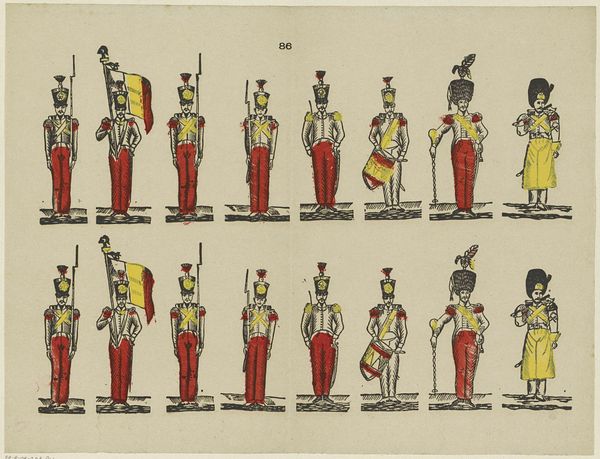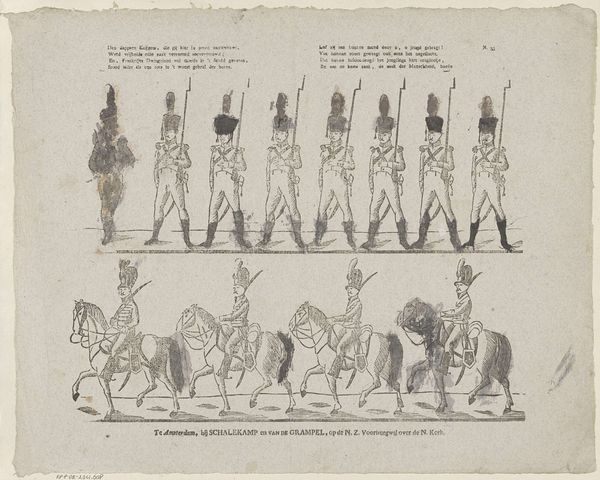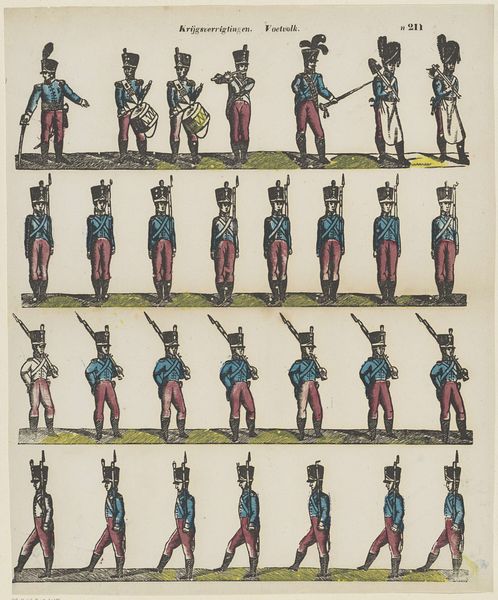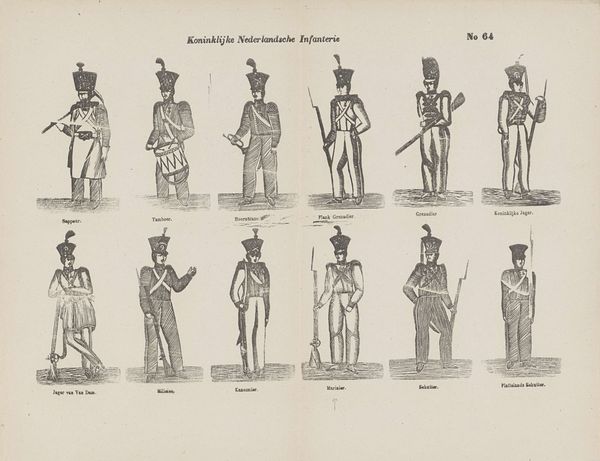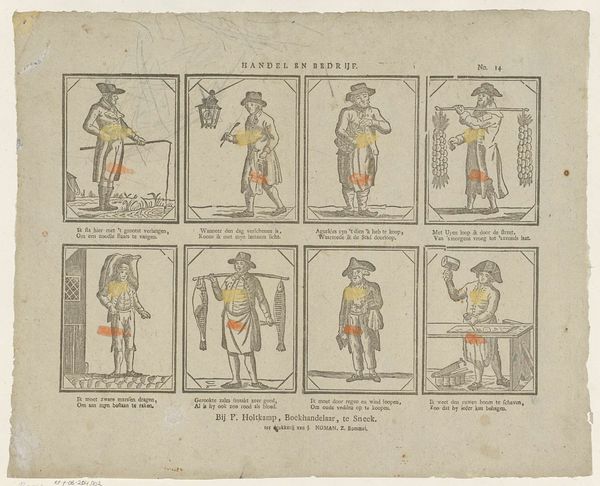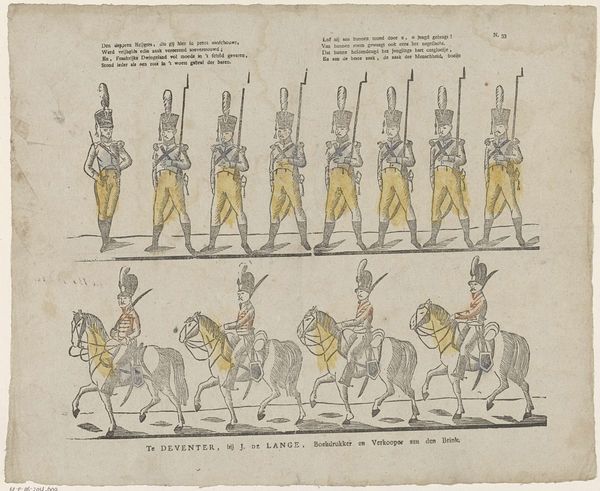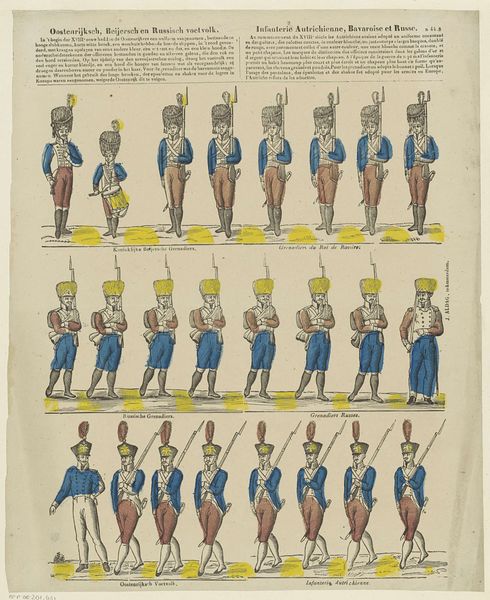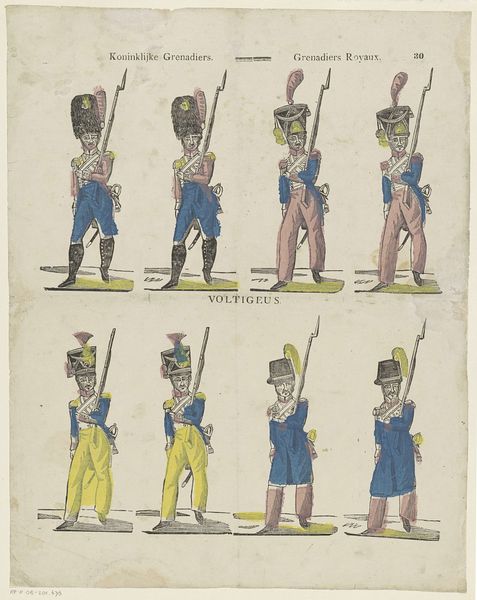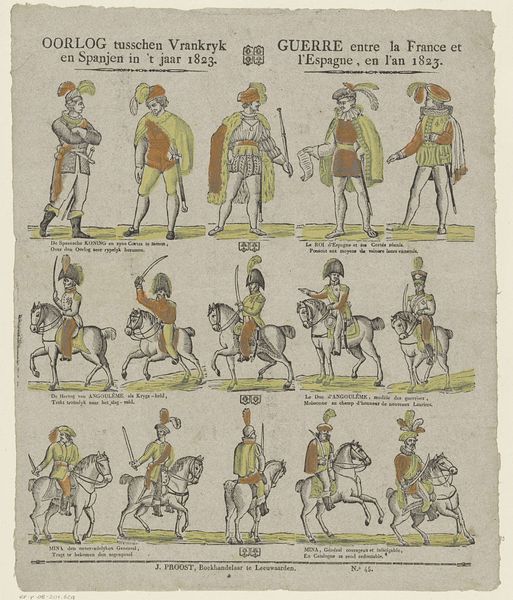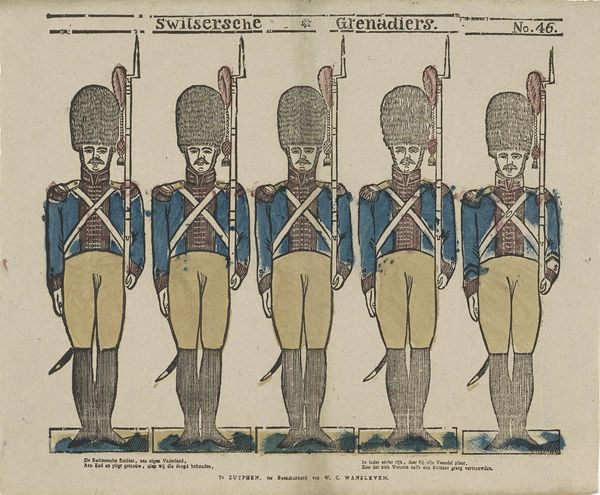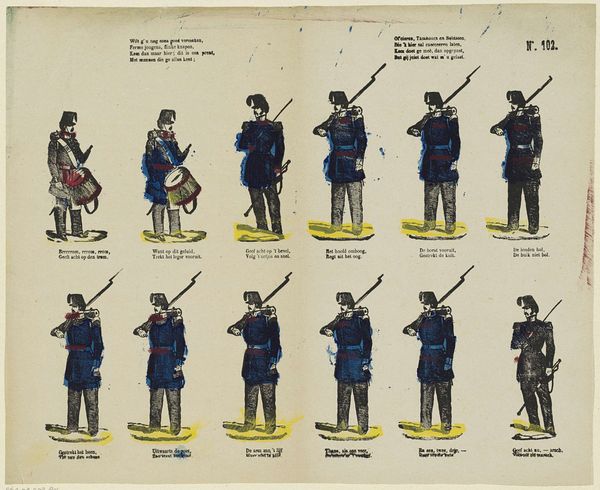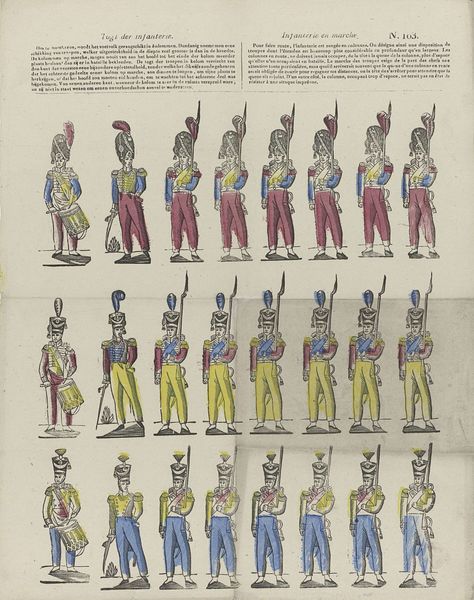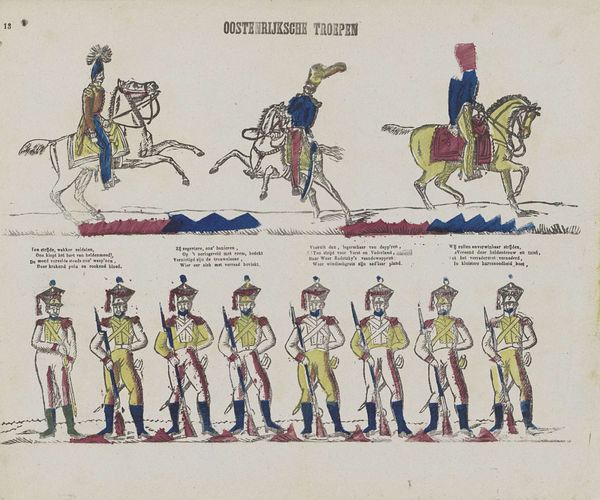
Koninklijke Nederlandsche Infanterie 1832 - 1850
0:00
0:00
theodorusjohanneswijnhovenhendriksen
Rijksmuseum
drawing, print, pen
#
portrait
#
drawing
#
weapon
# print
#
figuration
#
historical fashion
#
line
#
pen
#
history-painting
Dimensions: height 331 mm, width 410 mm
Copyright: Rijks Museum: Open Domain
Curator: The rows of soldiers stand to attention, starkly outlined in pen and print—it’s rather unsettling, like a parade of automatons. I can almost feel a rigid and oppressive sense of duty. Editor: Indeed. The Rijksmuseum holds this work, “Koninklijke Nederlandsche Infanterie,” created sometime between 1832 and 1850 by Theodorus Johannes Wijnhoven-Hendriksen. What we see is a print, likely mass-produced, showing the ranks of the Royal Netherlands Infantry. Curator: Each figure is subtly distinct, their titles carefully listed beneath – "Sapper," "Drummer," "Grenadier". I read these more like archetypes than portraits, meant to represent facets of military force rather than actual individuals. It makes you wonder about the human cost within. Editor: It's fascinating how this piece operated within 19th-century Dutch society. The uniforms, the rigid stances – these visuals heavily contributed to national identity. Visual culture during that period played a pivotal role in creating social order, and a shared sense of "Dutch-ness" perhaps? Curator: Precisely. The crisp lines of the drawing almost evoke the sense of military precision itself, while each distinct figure creates a narrative web around power. One begins to wonder what fears and aspirations lay beneath those uniforms, and to what degree the individual identities were suppressed for the greater order. The uniforms themselves speak volumes about codified status and symbolic representation of rank. Editor: It makes you wonder, what was the impact of popular imagery like this one on young men considering joining the army? How did it romanticize or sanitize the realities of war, bolstering nationalistic sentiment? The publisher would certainly have commercial interests tied into larger political movements. Curator: Perhaps we shouldn't underestimate the propaganda inherent within these neat rows and stylized depictions. But the human mind resists complete absorption by such imagery, instinctively seeking cracks, discrepancies, and untold stories behind each iconic face. Editor: True. We could see this print as a stark illustration of the period's efforts to standardize the military, embedding symbolic meaning in every buckle and button to construct something as persuasive as an emerging collective consciousness. Food for thought.
Comments
No comments
Be the first to comment and join the conversation on the ultimate creative platform.

